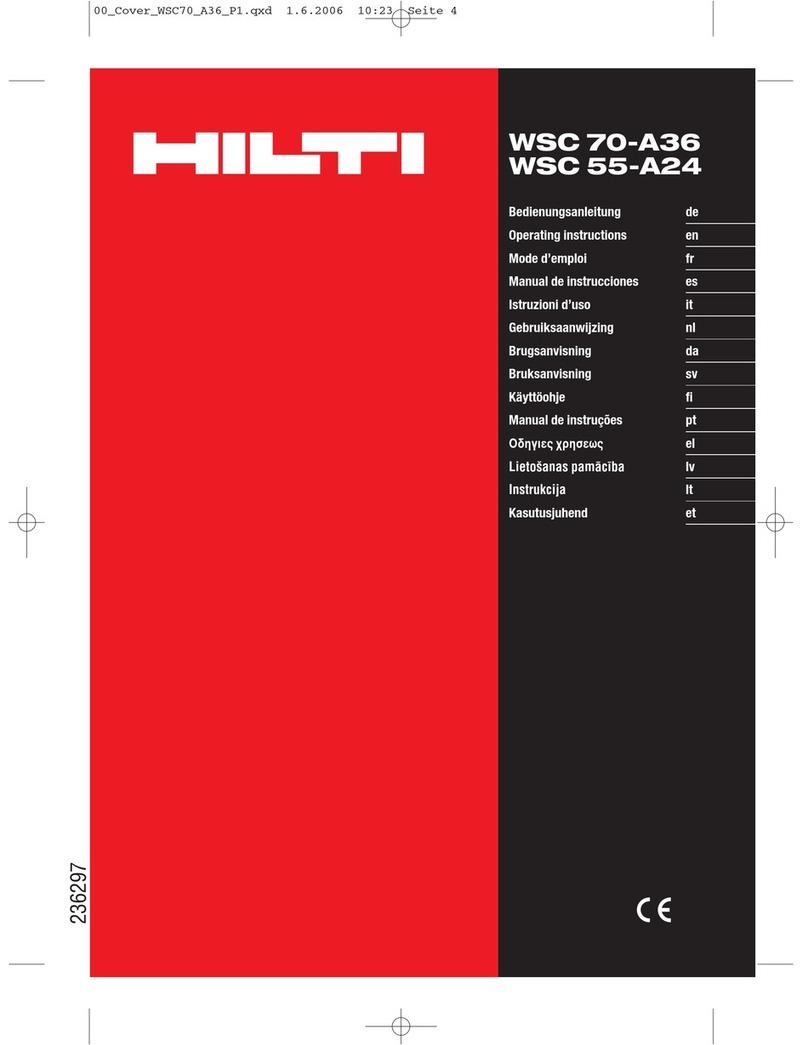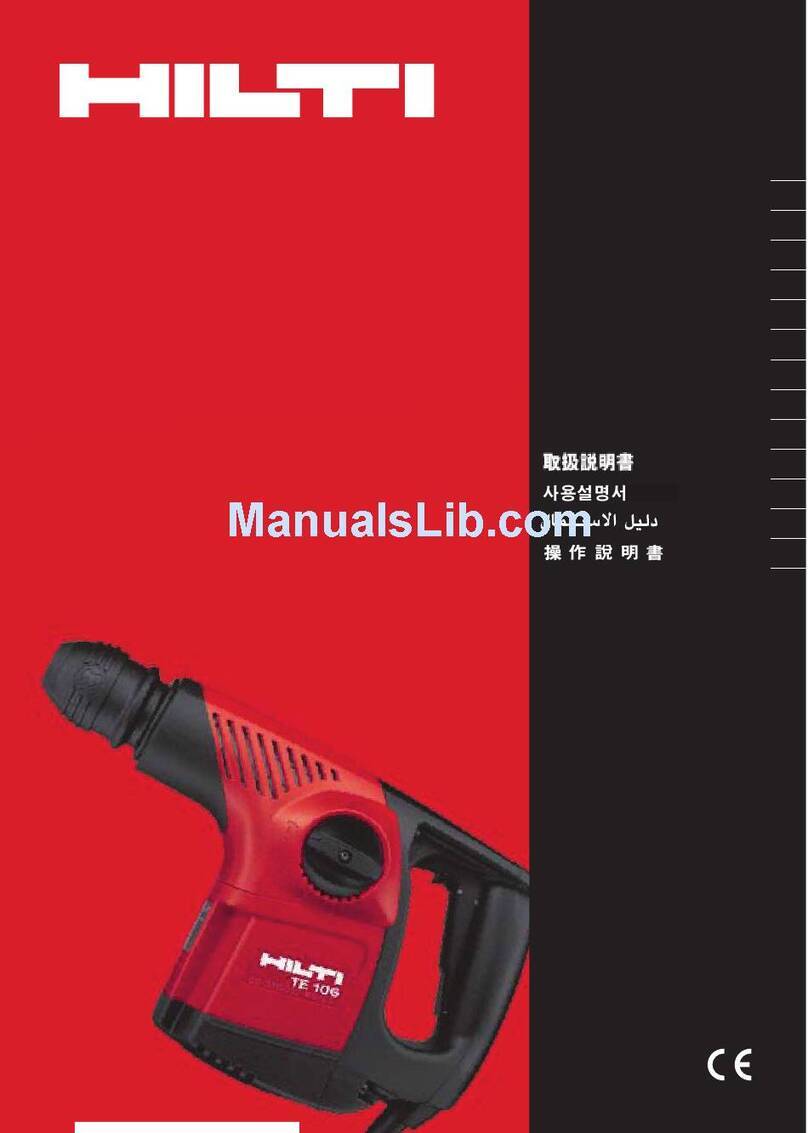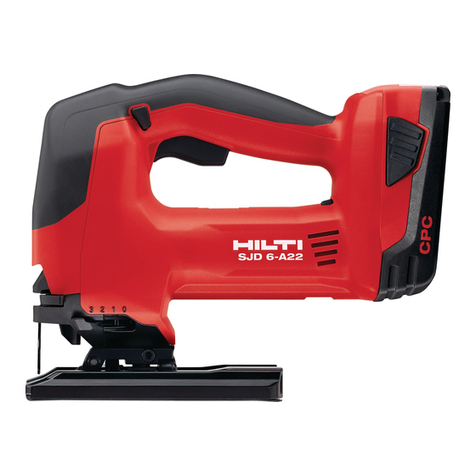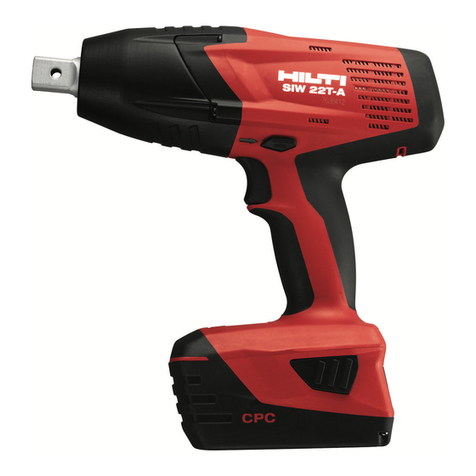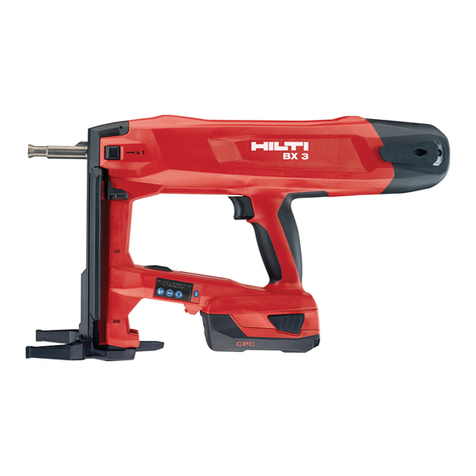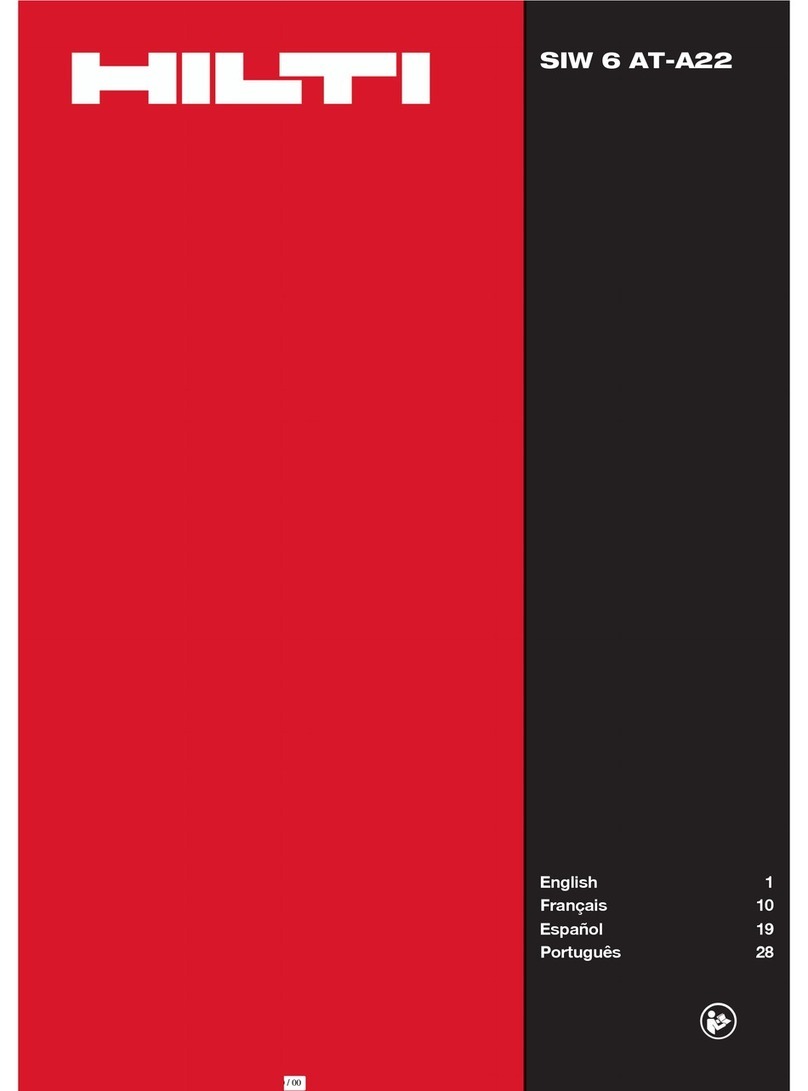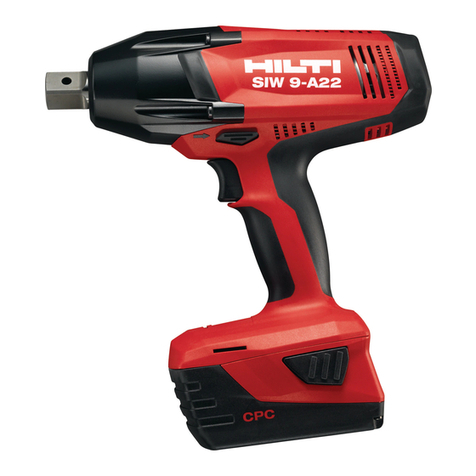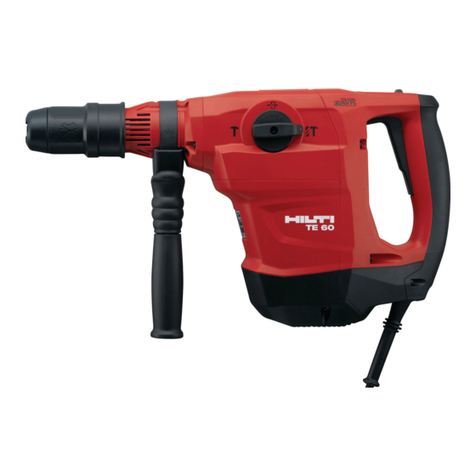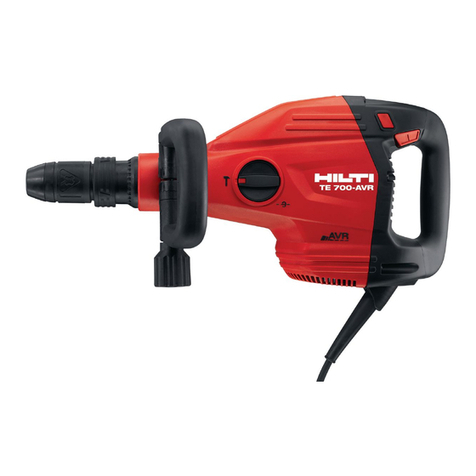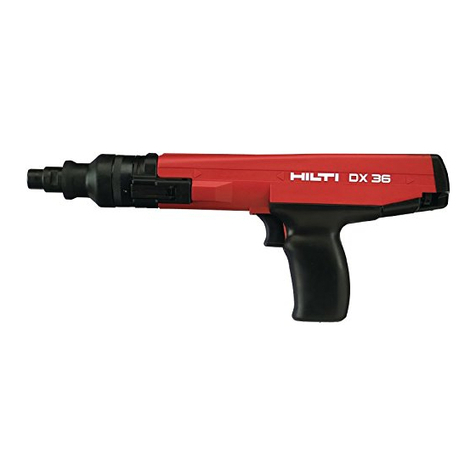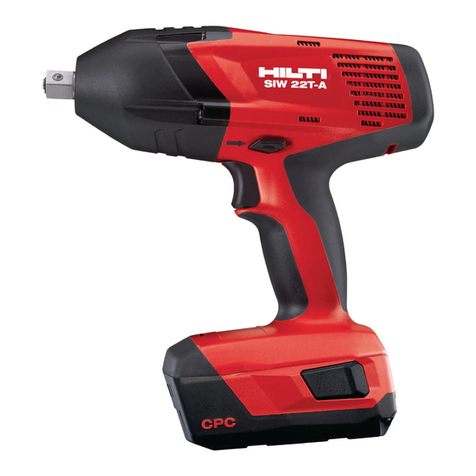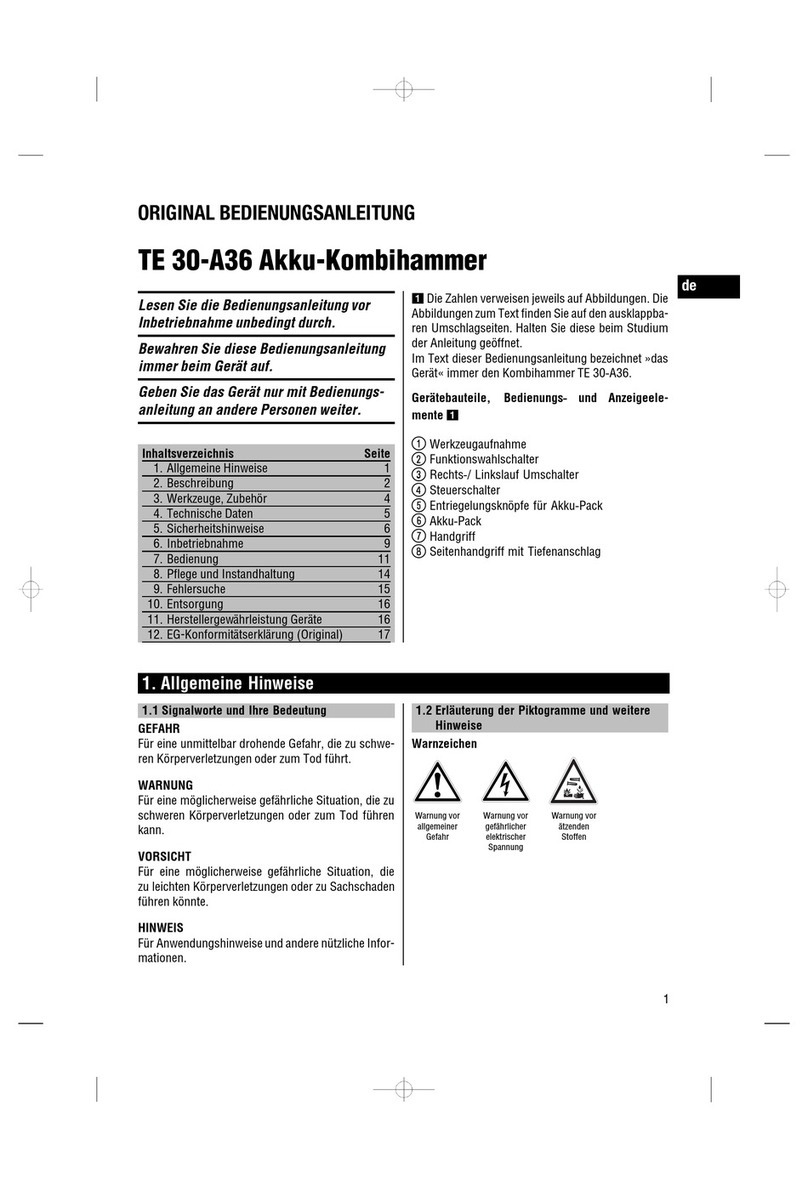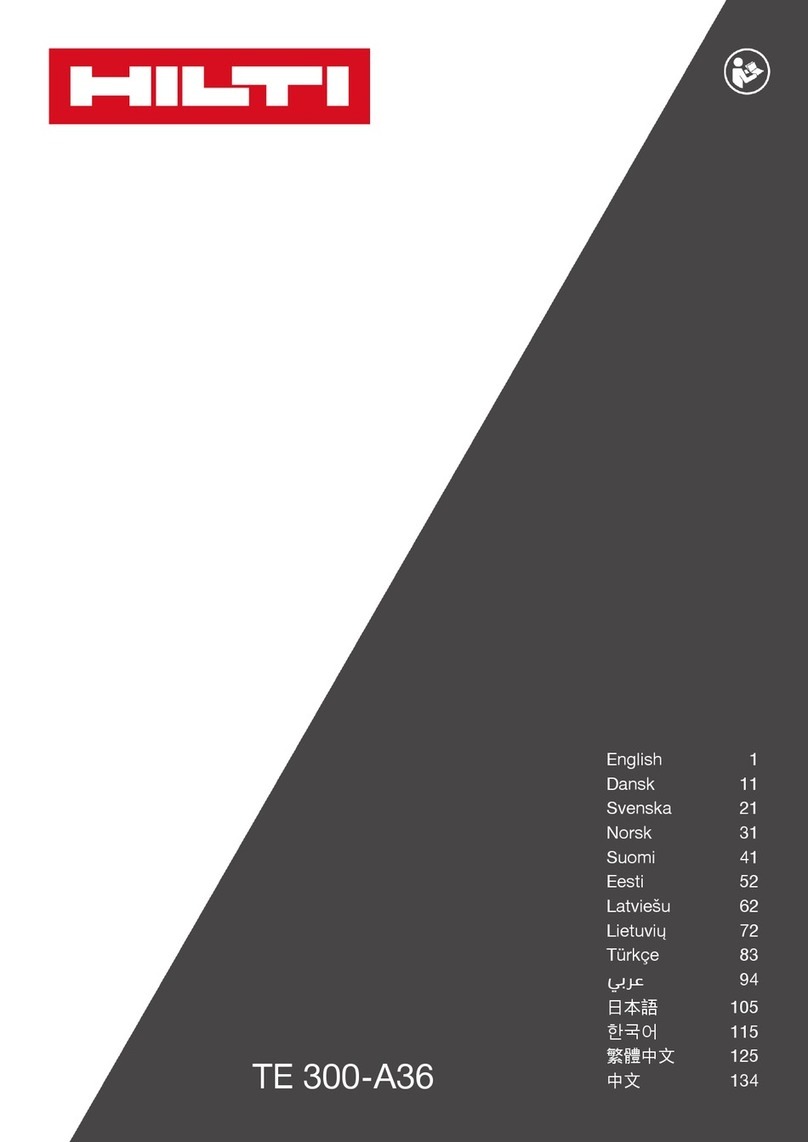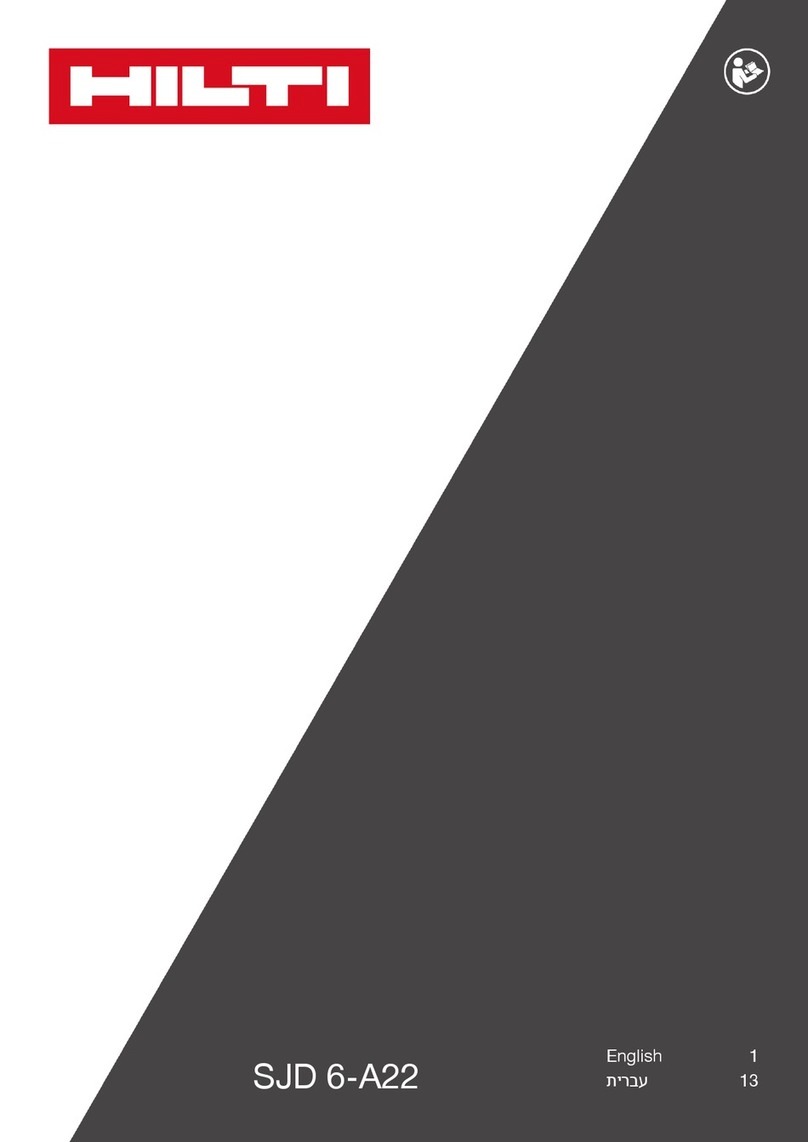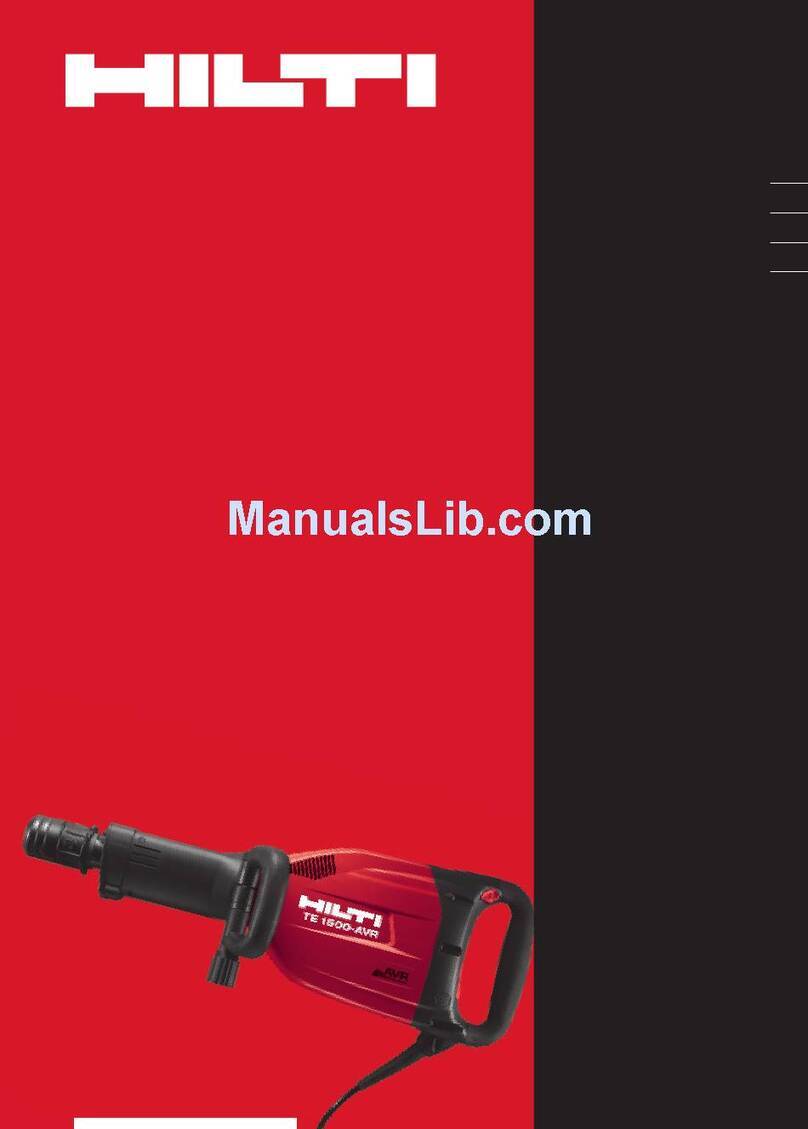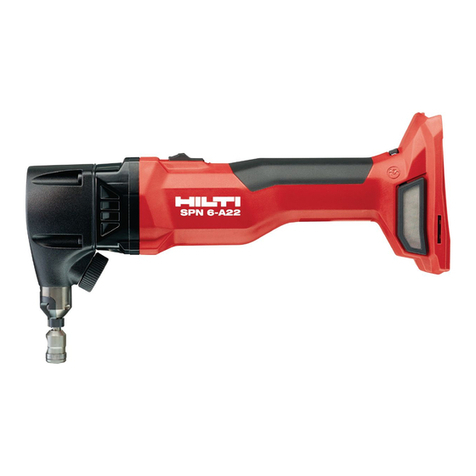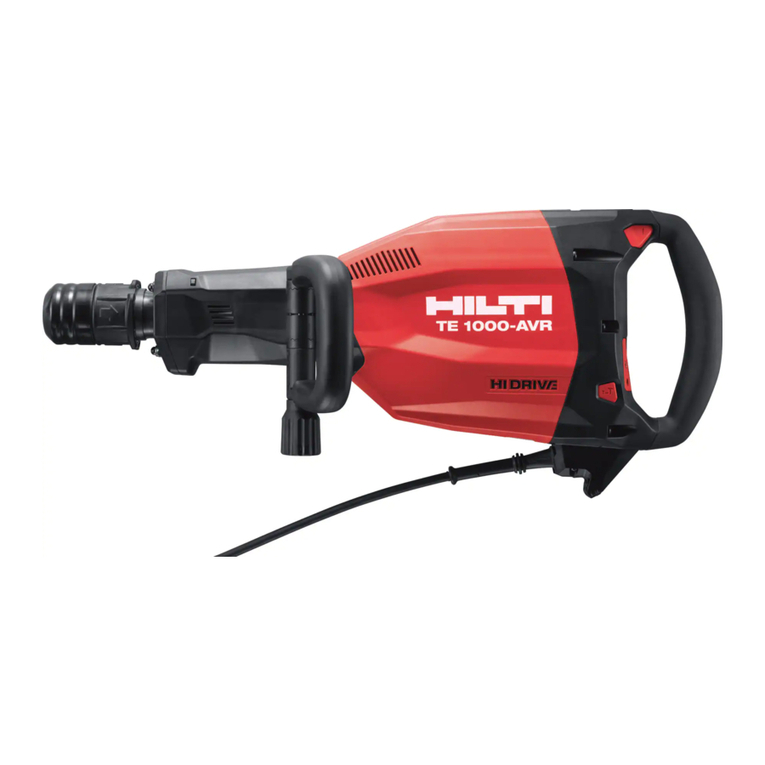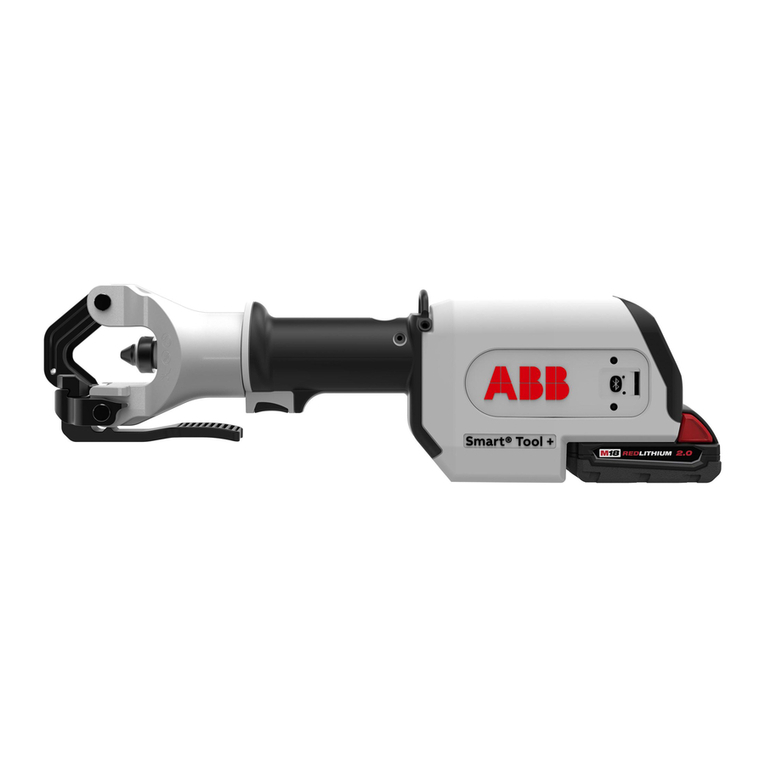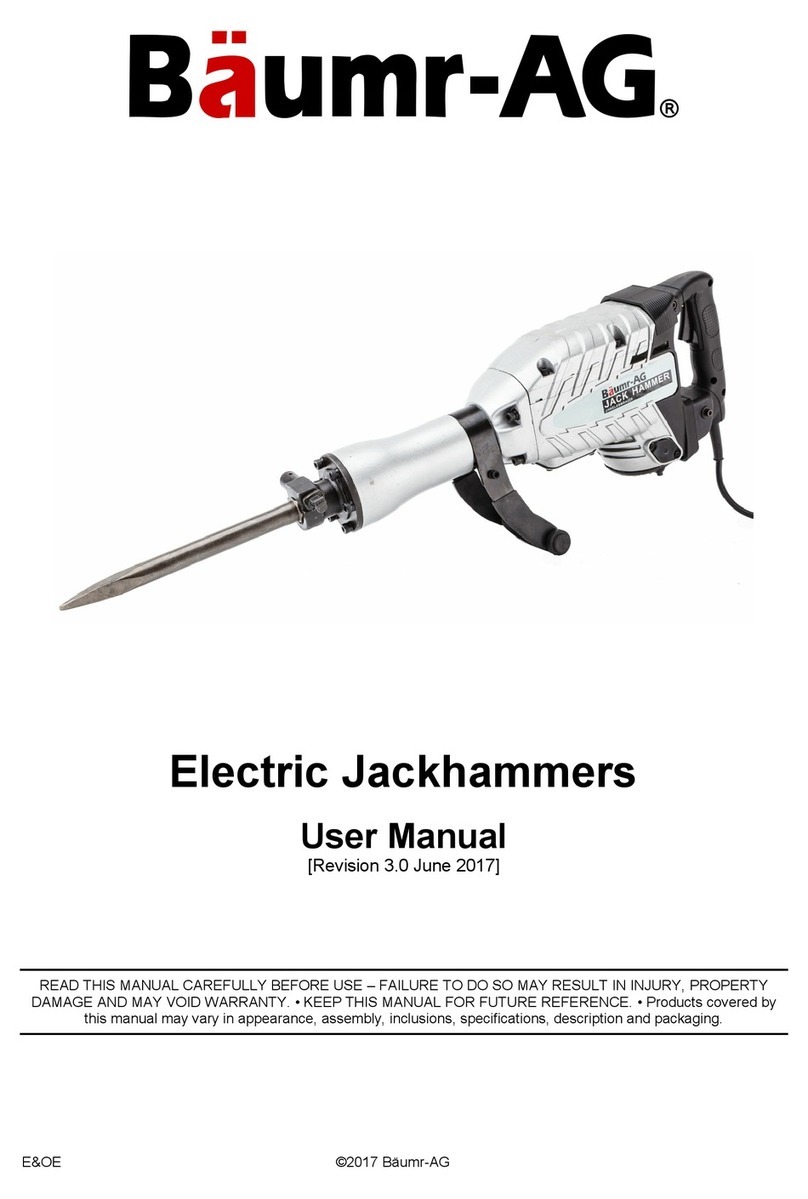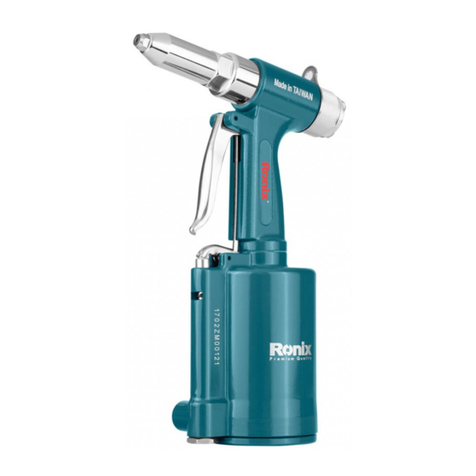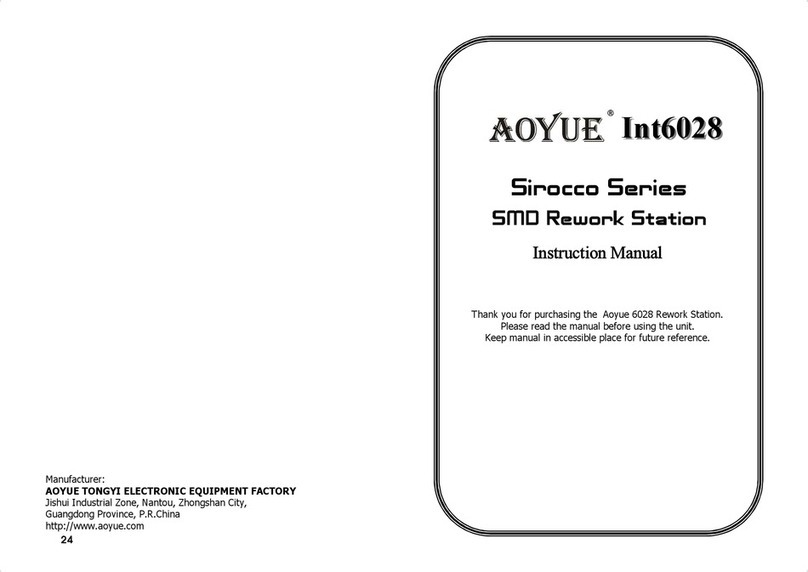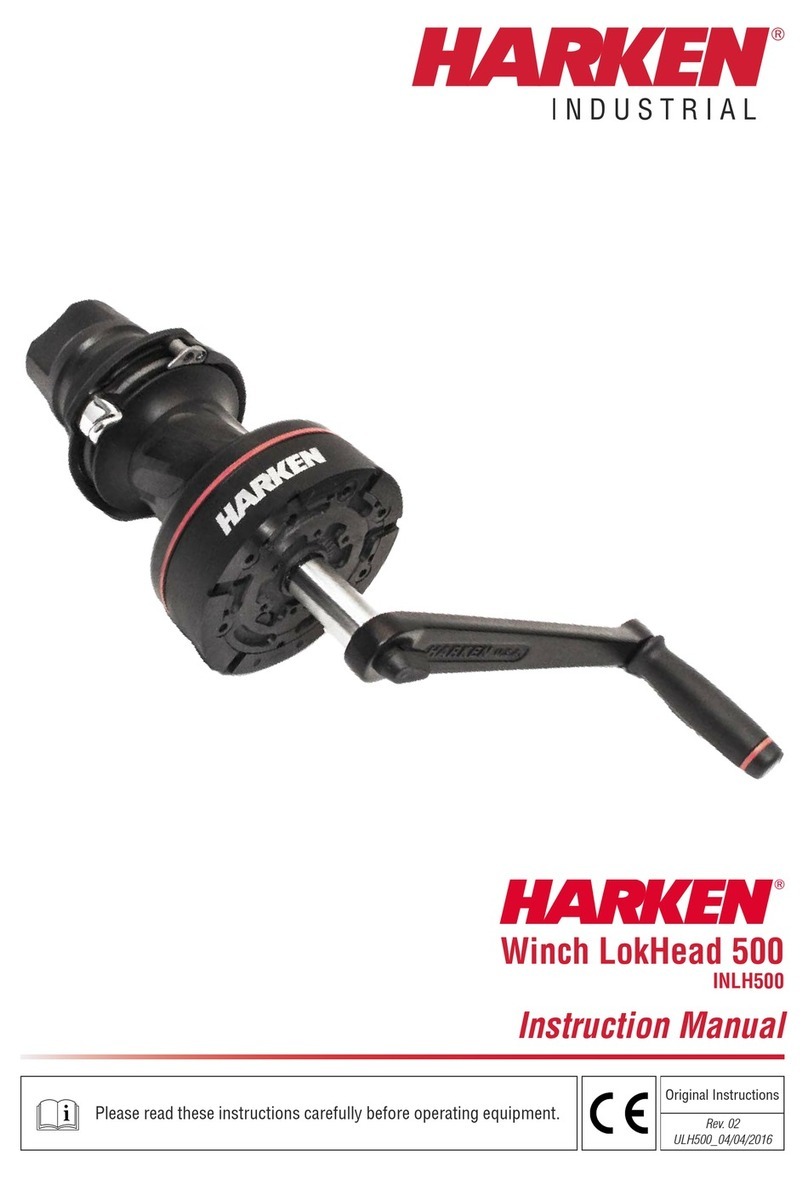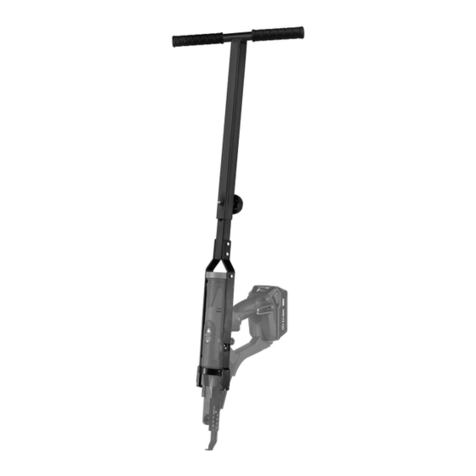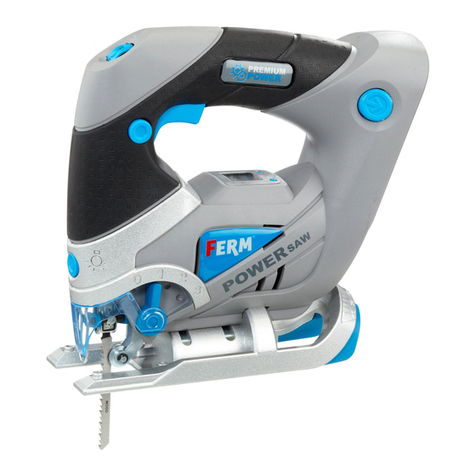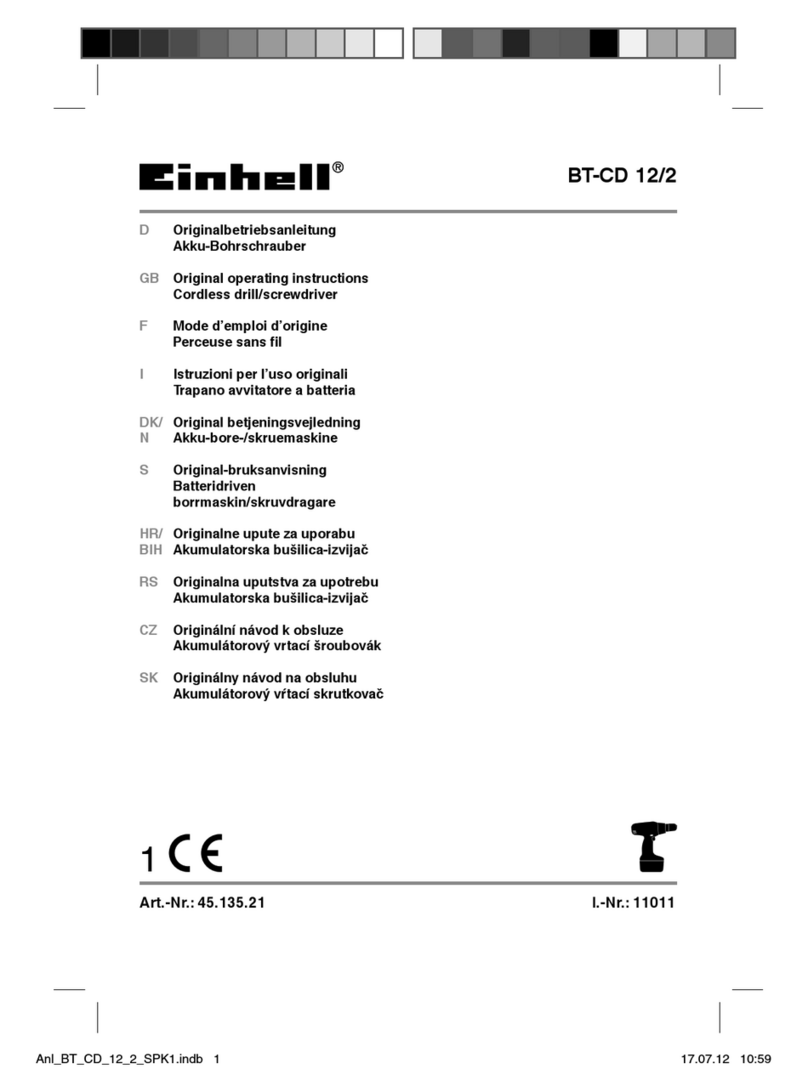English 5
▶Use auxiliary handles, if supplied with the tool. Loss of control can
cause personal injury.
▶Hold power tool by insulated gripping surfaces, when performing an
operation where the cutting accessory may contact hidden wiring
or its own cord. Cutting accessory contacting a "live" wire may make
exposed metal parts of the power tool "live" and could give the operator
an electric shock.
2.3 Additional safety instructions
Personal safety
▶Use the tool only when it is in technically faultless condition.
▶Never tamper with or modify the tool in any way.
▶Apply appropriate safety measures at the opposite side of the workpiece
in work that involves breaking through. Parts breaking away could fall out
and / or fall down causing injury to other persons.
▶Check that the side handle is fitted correctly and tightened securely.
Always hold the tool securely with both hands on the grips provided.
Keep the grips dry, clean and free from oil and grease.
▶Take breaks between working and do physical exercises to improve the
blood circulation in your fingers. Exposure to vibration during long periods
of work can lead to disorders of the blood vessels and nervous system in
the fingers, hands and wrists.
▶The tool is not intended for use by debilitated persons who have received
no special training.
▶Keep the power tool out of reach of children.
▶Before beginning the work, check the hazard classification of the dust
that will be produced. Use an industrial vacuum cleaner with an officially
approved protection classification in compliance with locally applicable
dust protection regulations.
▶Use a dust removal system and suitable vacuum cleaner whenever
possible. Dust from materials, such as paint containing lead, some
wood species, concrete/masonry/stone containing silica, and minerals as
well as metal, may be harmful.
▶Make sure that the workplace is well ventilated and, where necessary,
wear a respirator appropriate for the type of dust generated. Contact with
or inhalation of the dust may cause allergic reactions and/or respiratory
or other diseases to the operator or bystanders. Certain kinds of dust
are classified as carcinogenic such as oak and beech dust, especially
in conjunction with additives for wood conditioning (chromate, wood
preservative). Material containing asbestos may be handled only by
specialists.
Electrical safety
▶Before beginning work, check the working area for concealed electric
cables or gas and water pipes. You may receive an electric shock from
Printed: 07.02.2017 | Doc-Nr: PUB / 5070852 / 000 / 05
